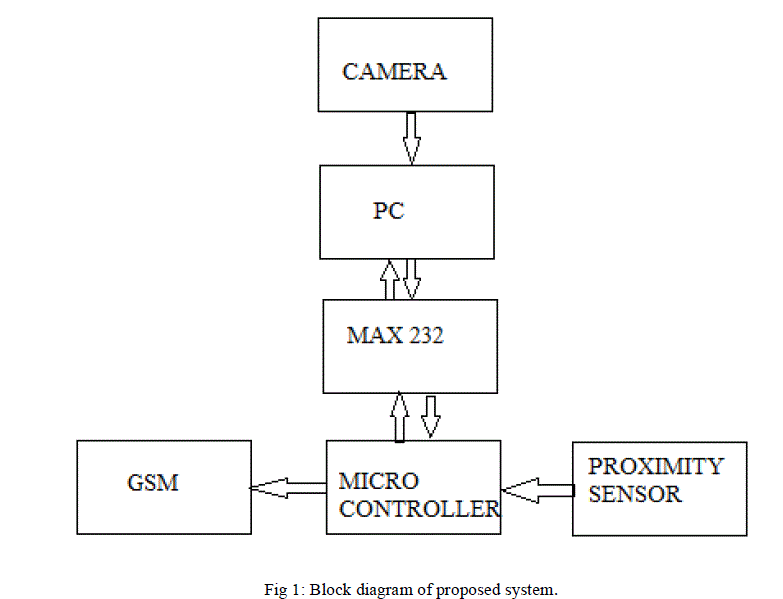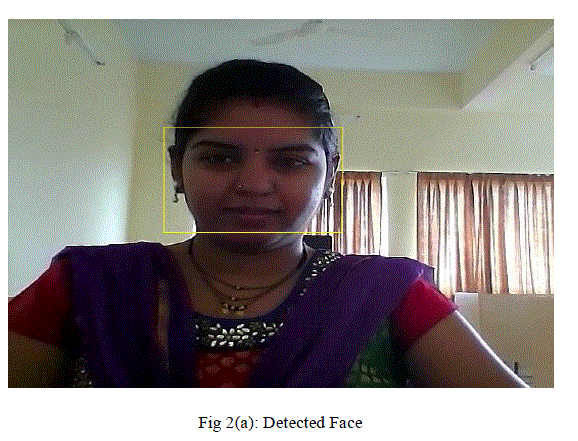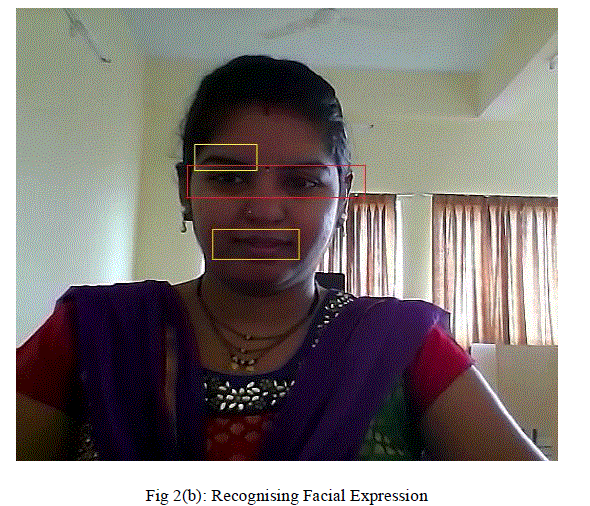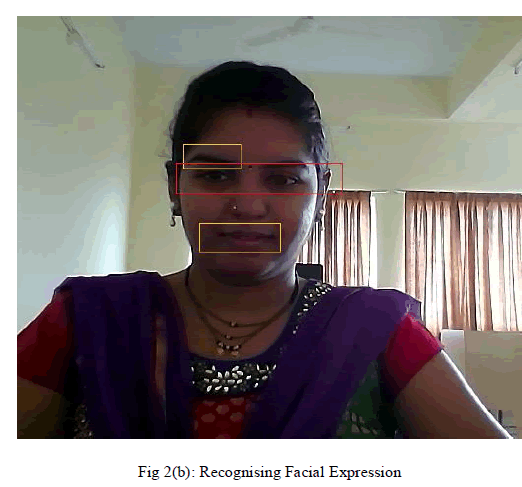ISSN ONLINE(2319-8753)PRINT(2347-6710)
ISSN ONLINE(2319-8753)PRINT(2347-6710)
A.A. Bagade1, Prof. N.B.Hulle2
|
| Related article at Pubmed, Scholar Google |
Visit for more related articles at International Journal of Innovative Research in Science, Engineering and Technology
Magic Mirror Table, an augmented reality system, the viewer’s emotion can be determined through study of his / her facial language. In human societal interaction, facial language conveys the emotional condition of a human being. Facial language conveys non-verbal communication indication in face-to-face interaction, which plays an important role in interpersonal relations. This information can also play an important role wherever humans interact with machines. Automatic recognition of facial language may act as a component of natural humanmachine interfaces. In this paper, the mentally retarded person when come across the mirror, a camera is positioned there. It helps to recognize the state of mood. The software helps to recognize the person and compare the input image with the stored data we propose a system which helps the doctor or patient’s parents to know about the emotional status of mentally retarded person with the help of algorithms for facial language recognition by using face detection algorithm and facial emotion recognition algorithm.
Keywords |
| Facial emotion recognition, Face detection, microcontroller, Human-machine interface, GSM. |
I. INTRODUCTION |
| Facial expression is very powerful and immediate means of communication, in human beings. The more effective part of human body is the face than the verbalization and realization of other’s feelings [1]. There are six basic expressions like happiness, sadness, anger, disgust, fear, surprise can be recognize by using eye tracking algorithm [2]. The head detection and head tracking algorithm have wide range of applications like in a game play. This application is used for detection of player’s attention [3]. We can also use head tracking algorithm and back propagation neural network (BPNN) for classification purpose of six basic emotions [4]. The BPNN algorithm is used for vector quantization in image compression [5]. In terms of implementation, the software we use is to determine the features of face like eye, eyebrow, nose, lips, etc. It uses point based face model [4]. |
II. RELATED WORK |
| In automatic analysis of facial expression, it uses movements of facial components like eyebrows, eyes, mouth,, nose, etc. also the speed of action [1][9]. Ying-li Tian presented that the group of facial expressions can be recognized alone or in combination in an average rate of 96.4% and 95.4% if neutral expression is not present [2][9]. The two problems in the analysis of facial expression must be solved, that are facial feature extraction and facial feature classification. The accurate geometric modelling and tracking of facial expression will show better result. M. Perreia describes low cost head tracking system. He presented four prototype applications like Tetris, Racing, Adventure, Pedagogical game [3]. The facial expression recognition is an important part of identifying the viewer’s emotional state and intention. Now a day, in smart phone such facilities are available having 89% of success rate of basic six emotion reorganization and neutral face expression. The mood therapy based on valence-arousal mood plane, where valence is mood from positive to negative mood change and arousal activates the emotions [4][6]. Proyecto Fin de compares the face recognition process with human brain. Such recognition is done through negative events related potential (ERP) [6]. Surveillance and monitoring technology analyses human behaviour affective and psychological phenomena [7]. Different kinds of facial expressions are identified by their geometric features, appearance features and hybrid features [9]. It is necessary to recognize facial expression automatically by human and computer interface [8][1]. |
III. PROPOSED SYSTEM |
| In this paper, after the comparative study of past and existing system in magic mirror we proposed a safety monitoring system for mentally retarded person. The mentally retarded person when come across the mirror, a camera is positioned there. It helps to recognize the state of mood. The software helps to recognize the person and compare the input image with the stored data. It will predict the emotion of that mentally retarded person and send a SMS to his/her parent or doctor through GSM. The proximity sensor is used to capture the face at proper distance. |
IV. PROPOSED SYSTEM DESIGN |
| The proposed system is based on various existing techniques, which includes various components, various algorithms, various applications, etc. That will help to enhance the system performance, and for future application which is helpful for future scope. So we briefly explain relates work as follows. A webcam is a video camera that feeds its image in real time to a computer. A webcam is connected by a USB cable. Webcams are famous for their low manufacturing cost and flexibility, making them the lowest cost form of video telephony. |
 |
| The video camera is commonly used for the World Wide Web so named as webcam. Other popular uses are security surveillance,for recording social videos, video broadcasting,computer etc. They are a source of security and privacy issues, as some built-in webcams can be remotely activated through spyware. It is a dual driver/receiver which includes a capacitive voltage generator. It supplies TIA/EIA-232-F voltage levels from a single 5-V supply. Every receiver converts TIA/EIA-232-F inputs into 5-V TTL/CMOS levels. These receivers have a typical threshold of 1.3 V, hysteresis of 0.5 V, and accept 30-V inputs. PIC16F876ais used for this project. It is nothing but Peripheral Interface Controller.PIC is popular because oftheir low cost, wide availability, large user base, extensive collection of application notes, availability of low cost or free development tools, and serial programming, re-programming with flash memory capability. It includes separate code space and data space. The facial emotion recognition includes the recognition of facial features like eyes, eyebrow, lips, etc., explained in table 1. The table shows such components with description. These are some permanent features of face that can change their shape according to the emotions. Lips can change the states like open, close n tightly close. Eyes can change state like open and close. Eyebrows can have straight line or can make some angle. The table 1 gives detail explanation about changes in facial components. |
 |
V. SIMULATION AND RESULTS |
 |
 |
| Fig2 (a) shows the image detected by the camera mounted over the display mirror by using face detection algorithm and compared with data base. The facial expression is recognised shown in Fig 2(b) by capturing different facial components like eyebrow, eye, and lips. Fig 2(a) and fig 2(b) are the simulation results, because output is taken by simulation software Mat lab. |
VI. CONCLUSION |
| In this paper, we proposed a magic mirror that helps to determine the facial expression of mentally retarded person. The proposed system is able to determine the emotion state of that person when he/she is in sad, angry, disgust, etc. This system will help to engage the patient’s parents or doctor and shares patients’ emotional status |